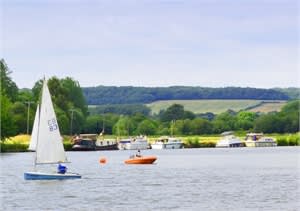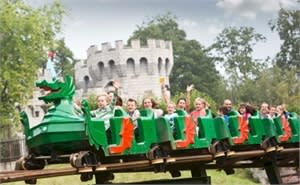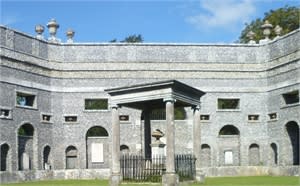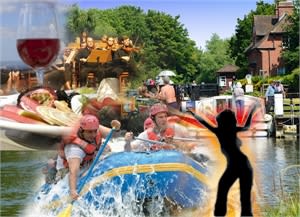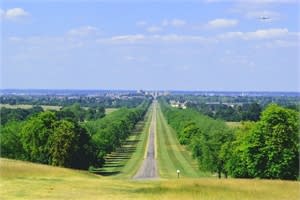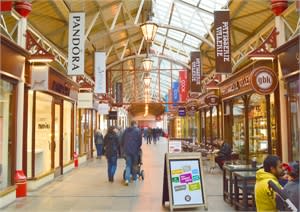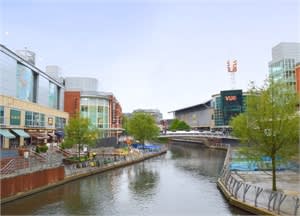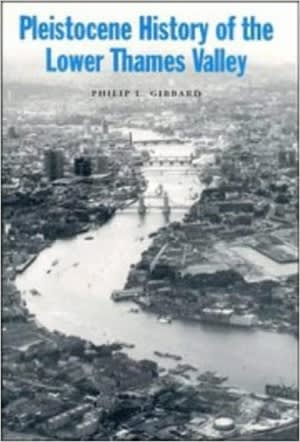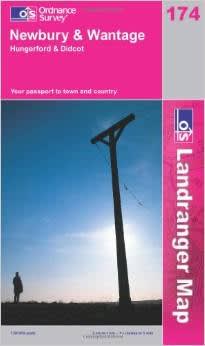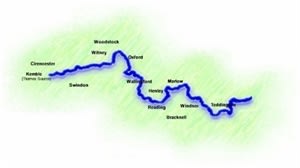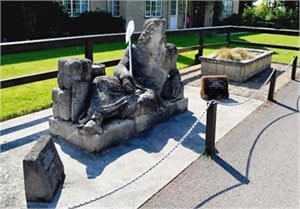Interesting Facts
The River Thames is England's best known river, and much of the country's history has been lived, worked and fought over alongside it. From its beginnings in the Gloucestershire countryside it runs for just over 200 miles to enter the North Sea east of London.
The Thames Valley was originally settled by prehistoric people, with the earliest occupations discovered so far at Runnymede and Staines, dating back about 6,000 years. It was in medieval times that the river became increasingly important for trade, particularly for carrying wool from the lush Cotswold meadows to London. Reading, for example, received 95% of its goods by barges towed along the River Thames. This importance increased further with the opening of the Severn, Oxford, and Kennet and Avon canals.
The towpath along the river was established towards the end of the 18th century by the Thames Commissioners. It is only in the latter half of the twentieth century that the river has ceased to be used for trade.
The following sections contain some lesser known tidbits around the River Thames and the Thames Valley. If you have a particular piece of information you would like to see here, please send an email to info@thamesvalleyguide.co.uk.
The River Thames
The source of the River Thames
The Thames starts life in a remote Gloucestershire field, approximately three miles south-west of Cirencester, bubbling up from the ground beside an old ash tree (we hope it's still there!). For much of the year, the source is dry and, especially during the summer, it remains without water for some distance. A stone marks the spot and bears the inscription "The Conservators of the River Thames, 1857-1974. This stone was placed here to mark the source of the River Thames".River Thames Characteristics
From its source until Lechlade, the Thames is shallow and not navigable. The Thames and Severn canal joins the river here, and a lock-keepers house, The Round House, stands on the spot. From Teddington Lock to the sea, the Thames in tidal.Carfax Conduit
Up on the hill above Nuneham Park stands the Carfax Conduit, once the water supply for the city of Oxford.Old Father Thames
'Old Father Thames' at St. John's Lock, Lechlade, is a statue originally created for London's Crystal Palace by R. Monti. It was rescued from the fire there in 1936 and subsequently donated and placed to mark the source of the river. In 1974, it was moved to its present location.The London Stone
On a bank at Staines Bridge is the London Stone placed here in 1285. It marks the former western limit of the City of London's jurisdiction over the Thames.
Thames Locks
The highest, the smallest and the deepest
St. John's Lock, Lechlade, is the highest on the Thames, 250 feet above sea level. Buscot lock, just east of Lechlade, is the smallest on the river. Just beyond Oxford is Sandford Lock, which is the deepest on the river.Isis Lock
Isis Lock in Oxford provided a link to the Oxford canal and thus a route for the Oxford Canal Company barges to navigate onto the river. This in turn allowed trade directly along the river.Shifford lock
Shifford lock near Duxford is the youngest on the river, having been built in 1898. It is located on an artificial cut which bypasses the original course of the river. Here, at Duxford itself, the only surviving purpose built ford is located.Day’s Lock
Day's Lock, near Dorcheste,r is the main gauging station for measuring the flow of water in the river and nearby. At Little Wittenham footbridge, the annual Poohsticks World Championships take place.Teddington Lock
Teddington Lock is the lowest lock on the river. Approximately 80 metres (265 yards) below Teddington Lock, an obelisk marks the boundary of the jurisdiction of the National Rivers Authority and the Port of London Authority.Mapledurham
At Mapledurham, near Reading, is the fist lock on the river to be mechanised in 1957 situated on the opposite bank to Mappledurham Mill.
Trade & Industry
Wolvercote Paper Mill
The Wolvercote paper mill upstream of Oxford has supplied the Oxford University Press since the early 17th century.From the Cotswolds to St. Paul's Cathedral
Barges from Radcot carried the Taynton stone quarried in the Cotswolds, which were then used to build St. Paul's Cathedral in London.
Bridges
Whitchurch Bridge
Whitchurch Bridge near Pangbourne is the second remaining toll bridge, and the last on the river.Radcot Bridge
Radcot Bridge, north of Faringdon, is a triple arched 12th century bridge which has foundations that may date back to Saxon times. It is the oldest surviving bridge on the Thames.Swinford Toll Bridge
Swinford Toll Bridge was built in 1777 for the fourth Earl of Abingdon whose descendants continue to receive the tolls from cars crossing over the bridge.Maidenhead
Maidenhead is famous for its two bridges, the road bridge built of Portland stone and Brunel's brick railway bridge, also known as the "Sounding Arch" for its amazing echo. The railway bridge has the widest brick-built spans in the world.Henley bridge
Henley-on-Thames is famous for its regatta which started in 1839 and gained royal patronage in 1851. The first Oxford and Cambridge boat races were held here and finished at Henley bridge.
Buildings
Cliveden House
Standing above Cookham on the opposite bank of the river sits Cliveden House. It now is a hotel set in impressive grounds, with a colourful history. Built in 1862 for the American Astor Family, it was in the riverside cottages during 1963 that the Profumo Affair took place. Rule Britannia had it's first performance here in 1739, and there are also stories of W.W.II Nazi sympathisers meeting here.Dorney Court
Dorney Court, on the Buckinghamshire bank near Bray Marina, is a timber, gabled house built in the 15th century. It has been owned by the same family for 500 years.Hampton Court Palace
This magnificent palace was built in 1515 by Cardinal Wolsey. Henry the VIII took it over in 1529 following Wolsey's downfall. From Kingston upon Thames, Jerome K. Jerome and Harris and Montmorency began their "Three men in a boat" journey.Stanton Harcourt
Just west of the river near Farmoor Reservoir is Stanton Harcourt, a 15th century manor house famous for the Pope's Tower, where Alexander Pope translated 'the Iliad' in 1718. in 1718.
Famous People
D'Oyly Carte
Just below Shepperton Lock is D'Oyly Carte Island, once home to the producer of the Gilbert and Sullivan Operas.King John
At Runnymede, in 1215, King John sealed the Magna Carta limiting the powers of an unpopular King. Across the river are the Air Forces Memorial and the John F Kennedy Memorial, set in an acre of England given to the American people.The Vicar of Bray
Bray, between Maidenhead and Windsor, is best know for it's 16th century 'Vicar of Bray' Simon Alwyn who changed his religion under the reigns of Henry VIII, Edward VI, Mary and Elizabeth I. Bray Film Studio, just past the marina, is where the Hammer House of Horror films were made.Jerome K. Jerome
At Ewelme, abou






